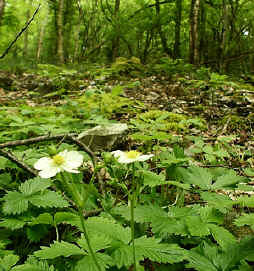Index of Diversity

| A diversity index is a way of measuring diversity. In ecology, such indices are often used to quantify the biodiversity of habitats. A diversity index takes into account the number of species present, as well as the abundance of each species. |
| The index of diversity formula which should be used for AS /A2
level Environmental Science and Biology courses in the UK is:
Where N = the total
number of organisms of all species and |
|||||||||||||||||||||||||||||||||||||||||
| Biological
Diversity - the great variety of life Biological diversity can be quantified in many different ways. The two main factors taken into account when measuring diversity are richness and evenness. Richness is a measure of the number of different kinds of organisms present in a particular area. For example, species richness is the number of different species present. However, diversity depends not only on richness, but also on evenness. Evenness compares the similarity of the population size of each of the species present. 1. Richness The number of species per sample is a measure of richness. The more species present in a sample, the 'richer' the sample. Species richness as a measure on its own takes no account of the number of individuals of each species present. It gives as much weight to those species which have very few individuals as to those which have many individuals. Thus, one daisy has as much influence on the richness of an area as 1000 buttercups. 2. Evenness Evenness is a measure of the relative abundance of the different species making up the richness of an area. To give an example, we might have sampled two different fields for wildflowers. The sample from the first field consists of 300 daisies, 335 dandelions and 365 buttercups. The sample from the second field comprises 20 daisies, 49 dandelions and 931 buttercups (see the table below). Both samples have the same richness (3 species) and the same total number of individuals (1000). However, the first sample has more evenness than the second. This is because the total number of individuals in the sample is quite evenly distributed between the three species. In the second sample, most of the individuals are buttercups, with only a few daisies and dandelions present. Sample 2 is therefore considered to be less diverse than sample 1.
A community dominated by one or two species is considered to be less diverse than one in which several different species have a similar abundance. As species richness and evenness increase, so diversity increases.
The data can then be put into the formula for the Diversity Index
As an example, let us work out the value of D for a single quadrat sample of ground vegetation in a woodland.
The higher the value of D, the greater the diversity. Of course, sampling only one quadrat would not give you a reliable estimate of the diversity of the ground flora in the wood. Several samples would have to be taken and the data pooled to give a better estimate of overall diversity. How many samples? There are many different diversity indices, of which Simpson's Diversity Index is one of the best known. (The index of diversity used on this page is Simpson's Reciprocal Index)
Ecological Sampling
|
|||||||||||||||||||||||||||||||||||||||||



